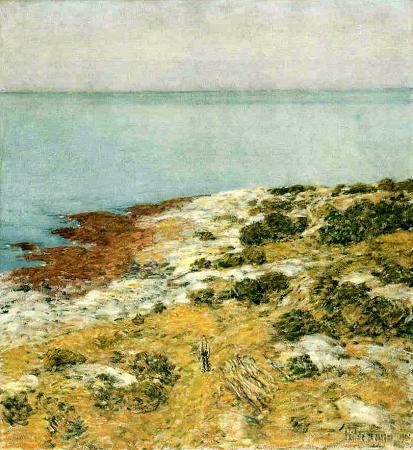Maine. Maine is the easternmost state in the New England region of the Northeastern United States. It borders New Hampshire to the west, the Gulf of Maine to the southeast, and the Canadian provinces of New Brunswick and Quebec to the northeast and northwest, respectively. Maine is the largest state in New England by total area. Of the 50 U.S. states, it is the 12th-smallest by area, the 9th-least populous, the 13th-least densely populated, and the most rural. Maine's capital is Augusta, and its most populous city is Portland, with a total population of 68,408, as of the 2020 census. The territory of Maine has been inhabited by aboriginal populations for thousands of years after the glaciers retreated during the last ice age. At the time of European arrival, several Algonquian-speaking nations governed the area and these nations are now known as the Wabanaki Confederacy. The first European settlement in the area was by the French in 1604 on Saint Croix Island, founded by Pierre Dugua, Sieur de Mons. The first English settlement was the short-lived Popham Colony, established by the Plymouth Company in 1607. A number of English settlements were established along the coast of Maine in the 1620s, although the rugged climate and conflict with the local Indigenous people caused many to fail. As Maine entered the 18th century, only a half dozen European settlements had survived. Loyalist and Patriot forces contended for Maine's territory during the American Revolution. During the War of 1812, the largely undefended eastern region of Maine was occupied by British forces with the goal of annexing it to Canada via the Colony of New Ireland, but returned to the United States following failed British offensives on the northern border, mid-Atlantic and south which produced a peace treaty that restored the pre-war boundaries. Maine was part of the Commonwealth of Massachusetts until 1820 when it voted to secede from Massachusetts to become a separate state. On March 15, 1820, under the Missouri Compromise, it was admitted to the Union as the 23rd state. Today, Maine is known for its jagged, rocky Atlantic Ocean and bayshore coastlines, mountains, heavily forested interior, and its cuisine, particularly wild lowbush blueberries and seafood such as lobster and clams. Coastal and Down East Maine have emerged as important centers for the creative economy, especially in the vicinity of Portland, which is also bringing gentrification to the area. The earliest known inhabitants of the territory that is now Maine were Algonquian-speaking Wabanaki peoples, including the Passamaquoddy, Maliseet, Penobscot, Androscoggin, and Kennebec. During the later King Philip's War, many of these peoples would merge in one form or another to become the Wabanaki Confederacy, aiding the Wampanoag of Massachusetts and the Mahican of New York. Afterwards, many of these people were driven from their natural territories, but most of Maine's tribes continued, unchanged, until the American Revolution. Before this point, however, most of these people were considered separate nations. Many had adapted to living in permanent, Iroquois-inspired settlements, while those along the coast tended to move from summer villages to winter villages on a yearly cycle. They would usually winter inland and head to the coasts by summer. European contact with what is now called Maine may have started around 1200 CE when Vikings are believed to have interacted with the native Penobscot in present-day Hancock County, most likely through trade. If confirmed, this would make Maine the site of the earliest European discovery in the entire US. About 200 years earlier, from the settlements in Iceland and Greenland, the Norse first identified America and attempted to settle areas such as Newfoundland, but failed to establish a permanent settlement. Archeological evidence suggests that Vikings in Greenland returned to North America for several centuries after the initial discovery to trade and collect timber, with the most relevant evidence being the Maine Penny, an 11th-century Norwegian coin found at a Native American dig site in 1954.
more...














